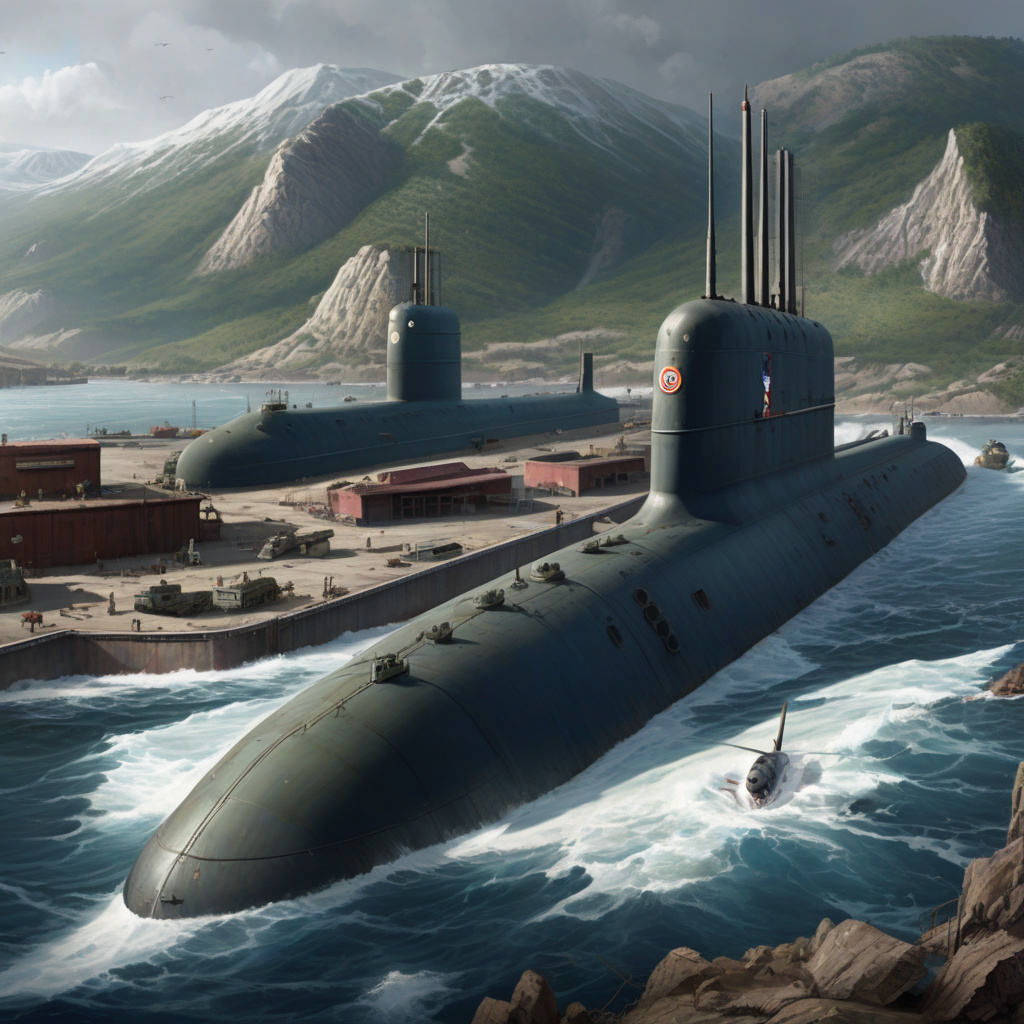Russian Nuclear Submarine Base Near 8.8 Earthquake Epicenter Sparks Safety Concerns
An 8.8-magnitude earthquake rocked Russia’s Kamchatka Peninsula on Wednesday morning. While the Kremlin claims that the earthquake did not cause any damage to the region’s critical infrastructure, concerns have been raised regarding the safety of the Russian nuclear submarine base located near the earthquake’s epicenter.
The Kamchatka Peninsula, known for its volatile seismic activity due to its location along the Pacific Ring of Fire, houses one of Russia’s most strategically important naval bases. The base serves as a homeport for a significant portion of Russia’s nuclear submarine fleet, including ballistic missile submarines capable of carrying nuclear warheads.
The proximity of the nuclear submarine base to the epicenter of the 8.8 earthquake has raised questions about the safety protocols in place to protect these sensitive assets in the event of a natural disaster. While the Kremlin has assured the public that the base is designed to withstand seismic activity, critics argue that the potential risks posed by such a powerful earthquake cannot be ignored.
In recent years, Russia has been investing heavily in modernizing its naval capabilities, with a particular focus on its submarine fleet. The country’s reliance on nuclear-powered submarines as a key component of its military strategy underscores the importance of ensuring the safety and security of these vessels, especially in regions prone to seismic disturbances like Kamchatka.
Experts point out that while modern submarine bases are built to withstand a certain degree of seismic activity, an earthquake as powerful as the recent 8.8-magnitude event could potentially compromise the integrity of the base’s infrastructure. The possibility of damage to the base’s facilities, including its docks, maintenance areas, and command centers, raises concerns about the operational readiness of Russia’s submarine fleet in the aftermath of such a catastrophic event.
The safety of nuclear facilities, particularly those housing strategic assets like nuclear submarines, is a matter of global concern. The potential environmental and security implications of a breach at a nuclear submarine base underscore the need for robust safety measures and contingency plans to mitigate the risks associated with natural disasters.
As Russia continues to assert its presence in the Arctic region and expand its naval capabilities, ensuring the safety and security of its critical infrastructure becomes paramount. The recent earthquake near the Kamchatka Peninsula serves as a stark reminder of the unpredictable nature of seismic activity and the importance of preparedness in safeguarding sensitive military assets.
In light of the safety concerns raised by the proximity of the Russian nuclear submarine base to the recent earthquake epicenter, calls for a reassessment of safety protocols and infrastructure resilience have grown louder. The Kremlin’s response to these concerns and its efforts to address the vulnerabilities exposed by the earthquake will be closely monitored by both domestic and international observers.
The intersection of military strategy, environmental risk, and technological advancement underscores the complex challenges facing nations with strategic interests in volatile regions like Kamchatka. As Russia grapples with the aftermath of the earthquake and assesses the implications for its naval operations, the safety of its nuclear submarine base will remain a topic of heightened scrutiny in the days and weeks to come.
safety concerns, nuclear submarine base, seismic activity, Kamchatka Peninsula, Russian Navy











